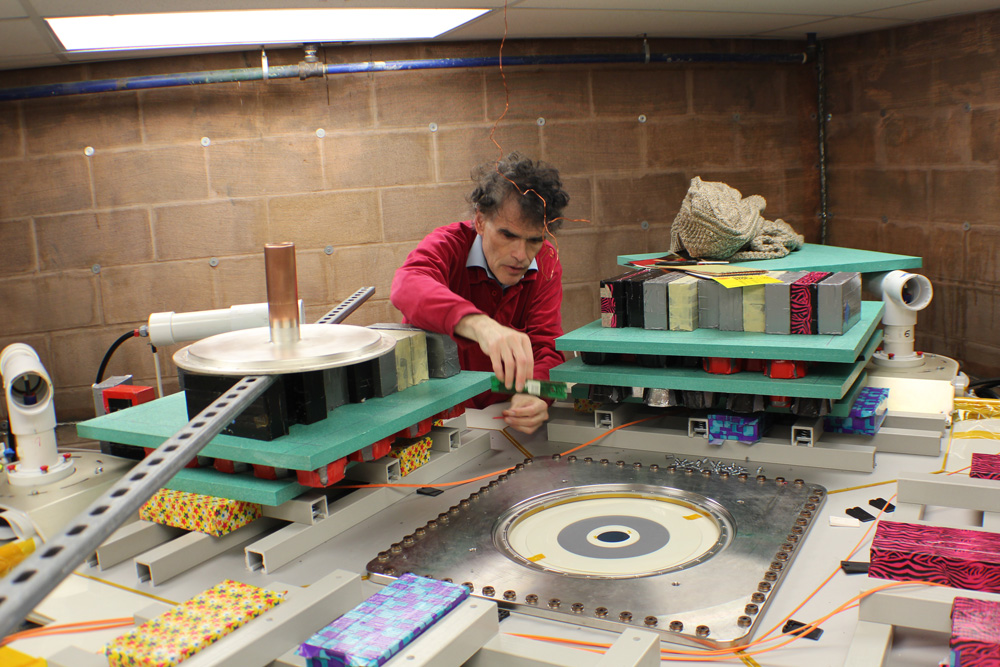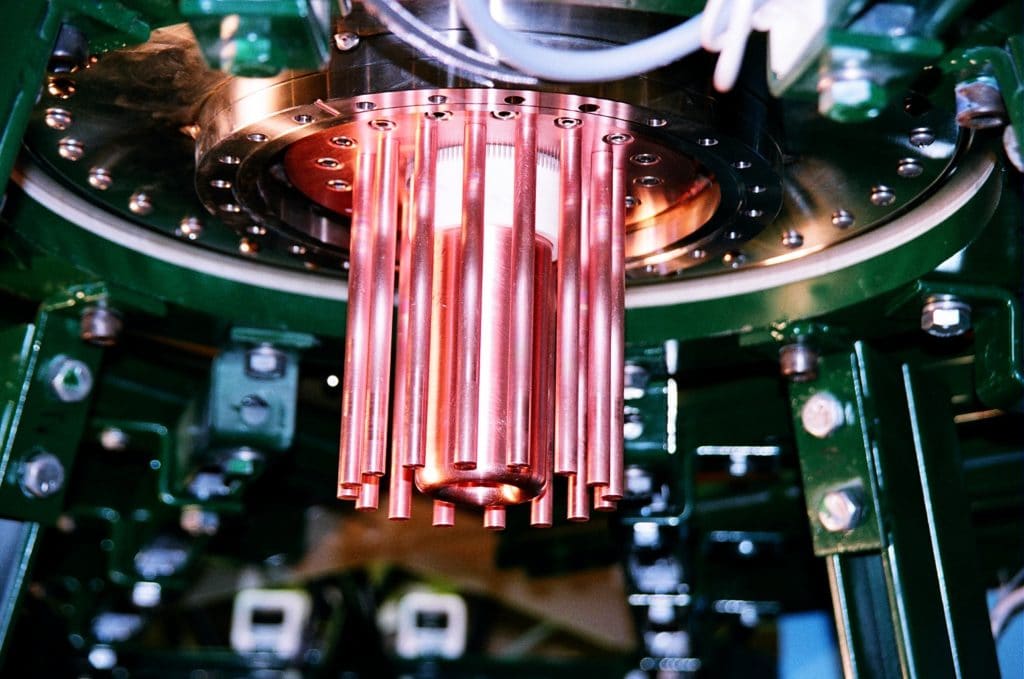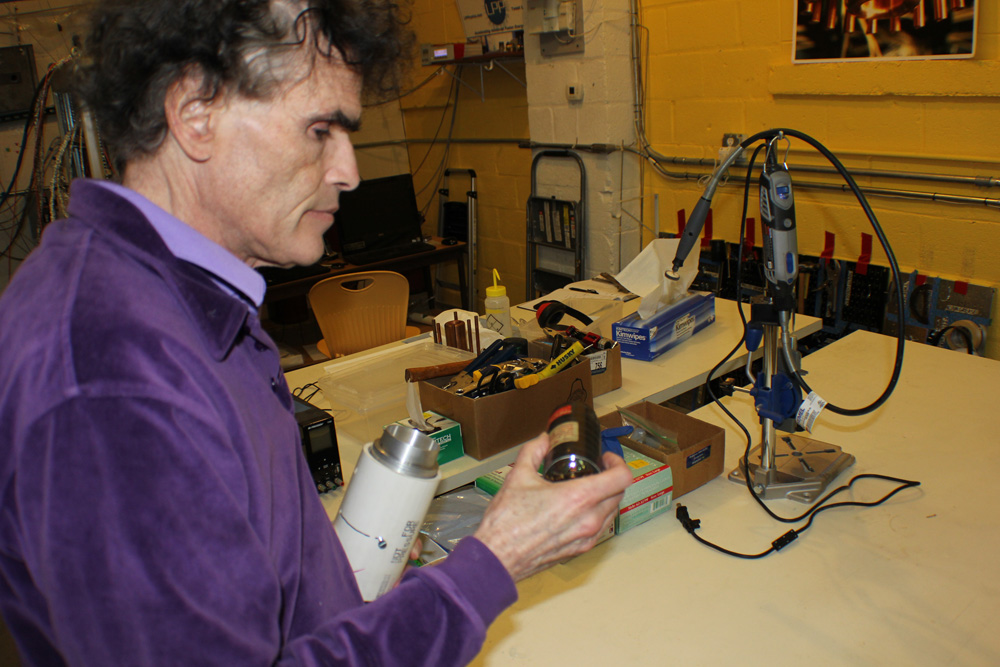This New Jersey startup wants to disrupt the energy industry
LPP Fusion is on a mission to produce cheap, clean and safe energy for the masses. We talk to founder Eric Lerner about the trials and tribulations of finding funding, inventing technology, and tackling the energy giants. Get ready for a science lesson.
So, what’s LPP Fusion in a nutshell?
Basically, we’re trying to develop an energy source that will succeed fossil fuels. It solves the need for a new source of cheap, clean, safe and inexhaustible energy. It’s a form of nuclear fusion; the energy source for the sun and all the stars in the universe.
We’re combining a device that’s called the plasma focus with a fuel consisting of hydrogen and boron. Right now, we’re trying to prove in the laboratory that we can get more energy out of the device than we put in, which nobody has done so far with cold fusion.
After we do that we would attempt to turn the device into a generator that can be mass produced. This is not something that’s huge, our generator fits into a small room. If we perfect this, we’re looking at something that will provide five megawatts of power and would be small enough to essentially roll off an assembly line, like a car.
What’s your USP?
If we succeed we’re going to be producing energy at an order of magnitude cheaper than any existing energy source, because we’re using what’s called aneutronic fuels. These release energy without also releasing neutrons in the form of moving charge particles. So we can convert energy into electricity directly, without going through the expensive process of heating water to produce steam to drive a turbine in a generator. It will be reducing electricity costs to a few tenths of a cent per kilowatt hour. That would be far lower than wind, solar or even coal.
Fusion isn’t a topic that is easy for the average person to understand, unlike solar and wind energy. Could you touch upon the safety and feasibility aspects of what you’re doing?
The most important thing to understand is about the reaction itself. A fusion reaction consists of two charged nuclei interacting – they’re the inputs. It’s different than fission, which is what most people call nuclear energy. That’s when nuclei and a neutron interact.
So with fusion you have neutrons going in and neutrons coming out. When you use hydrogen and boron, they interact, they release energy and you get three helium nuclei and no neutrons.
That means it doesn’t produce any radioactive waste, which is a big safety factor.
Second, it’s a pulse device. Each pulse of energy, which heats up a tiny particle of fuel to a very high temperature, uses only a very small amount of energy. What we like to say is that the amount of energy in each pulse is equivalent to what would be released in your body if you ate five pistachio nuts. Now if you do this 200 times a second, you get out five megawatts. But since there’s so little energy being produced each pulse, it’s really safe. You don’t have a lot of energy in the machine that can suddenly be released. So not only will this be cheaper, it will be safer than any other energy source.

How has your funding journey been?
Funding is certainly a weak point. We have raised a little more than $5m from small, private investors and one institution since this phase started in 2008. So we’re working on a budget that’s too small – about $600,000 a year. We’re looking to increase that to $1m a year to be able to hire more people to complete the scientific phase of the project. For the engineering phase, we’re going to need $50-100m. We hope that if we demonstrate that net energy production in the lab, we’ll get substantial government funding – so we don’t have to raise strictly privately. In the immediate future, we are looking into ways of expanding our equity funding, including crowdfunding in the US.
Once funded, how long would it take for you to launch the product into the market?
In any research project, there are a lot of uncertainties. We’ve made predictions on timing in the past that have been off because we just haven’t had the funds to reach our goals. But if everything goes right we expect that we would have a prototype generator ready to be manufactured within the next five years.
What have been the biggest struggles you’ve had to overcome so far?
The plasma focus device has actually existed since the 1960s. I started working in the field in the 1980s when I developed a theoretical understanding of how it could be used to produce energy with hydrogen-boron fuel. But it wasn’t until the 1990s that we started to get funding from NASA’s Jet Propulsion Lab for a series of small experiments. We did some in cooperation with the University of Illinois in 1994 and then another series with Texas A&M University in 2001.
Unfortunately, at that point, NASA was directed to get out of the fusion business so we were cut off and had to look for private funding. It took us about seven years to raise the money to help build our own device here in Middlesex, New Jersey. Then, we had another hold up. We found that the switches, which we had bought commercially, were not what we had expected. So we had to spend quite a bit of time devising our own (the switches deliver the current and have to operate very accurately).
After that, the main challenge was how to prevent impurities from entering our plasma (the electrically conducting gas where the fusion reactions take place). For the device to work, it has to be very pure. So we’ve been working for quite some time to solve the problem of impurities and when we do, it will get us to the point where we get the net energy out that we need.

What sort of market testing did you do?
What excited me back in the 1980s was the prospect of a very compact device that produces no radioactive waste, just cheap and abundant energy. It was clear to me, and to several other scientists, that would essentially blow any other energy source out of the water. It really would be a solution to the entire energy problem.
So the benefit was pretty clear from the beginning. The key problem was how to get there. People have been working on this device for some time but they have been limited by a lack of funding. They had also run into a significant problem where, as they tried to put more and more energy into the device, the output initially went up very rapidly but then it plateaued. My theoretical work was aimed at understanding what was causing this ceiling. Part of it was the size of the machine – we actually scaled the machine down in size even further. And when we actually started the experiments it became clear that these impurities in the plasma were the key problem that had to be overcome.
But I think the biggest misunderstanding that we had was not about the market but about raising money. I tried for quite some time to raise $2m to get this project started and I just couldn’t do it. I later read that $2m is a terrible amount of money to try to raise because it’s too small to interest big players and it’s too big for small players.
Eventually, I decided we could at least get the machine built for $1m so that’s what we actually received from our one institutional investor, a Baltimore foundation in Baltimore called Abell Foundation, and a couple of private investors. But it meant that we had to continuously raise money because we couldn’t do the project for anything close to $1m. That was a big lesson.
The second one I learned is that it’s very difficult to raise money for really cutting-edge science from very wealthy people, because they tend to invest in what other very wealthy people are investing in – or they want to control the project themselves.
We didn’t want to give up control. We wanted the scientists to maintain the control and that’s why in this company, I’m the only one who has voting shares.

Who are the customers for this product?
Since manufacturing these devices will take a lot of capital, we’re intending to try and replace the entire market rather than manage it. We’re going to sell manufacturing licenses to the likes of the Chinese State Electricity Authority. We would start doing it ourselves on a small scale but mainly to gain the experience necessary to advice our licensees.
Now, in terms of the optimal clients to buy the devices, these can be very small consumers – a five-megawatt generator is suitable for a small town. So for example, you could have individual towns in this state in New Jersey – they could buy their own generator and that would vastly reduce their dependence on the grid.
When we had three big storms here in New Jersey a few years ago, power in my town was out for a total of one month out of thirteen months. If these generators exist, individual towns and individual neighborhoods could have power even in the event of a disaster that knocks out the grid. And of course, big utilities might buy them as well.
Are there any factors that you are worried might stall your success?
Obviously the biggest worry we have now is clearly the success of the scientific research. We don’t know of any reason why we should not succeed. But in any research project, it’s the unknown problems that you worry about.
In the development phase, the biggest engineering problem is cooling the device. We think the answer is within known technology; we’ll probably be using compressed helium.
We also think it’s certainly possible that fossil fuel companies, which of course have tremendous political power, might use their influence in government to put unreasonable regulatory obstacles in our way. We are preparing for that because we’re trying to educate the public that this is a highly desirable, safe and reliable energy source if it can be developed. We hope to make it politically difficult to put obstacles in the way of this reaching a full market.
For more information visit LPP Fusion.
Interview by Vishnu Rajamanickam. info@thinkruptor.com